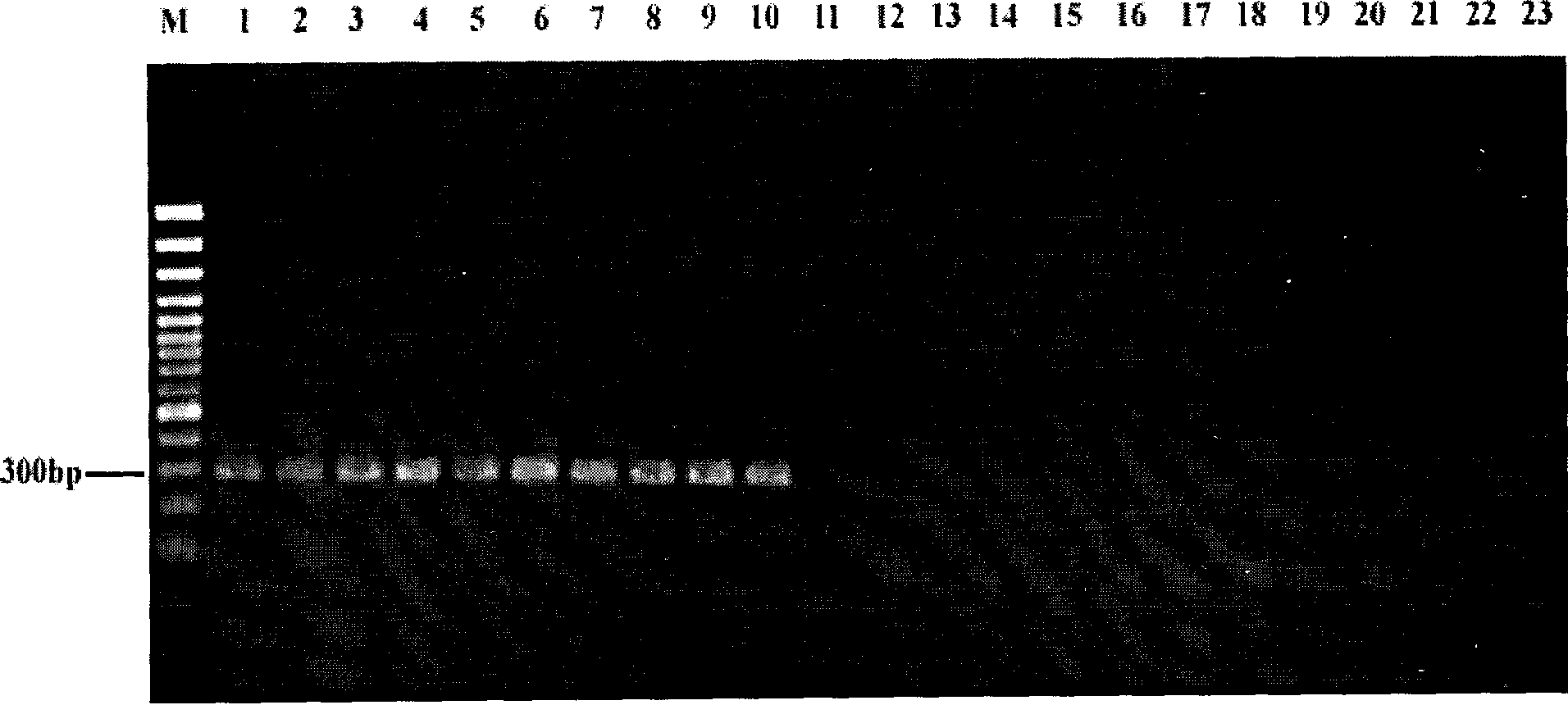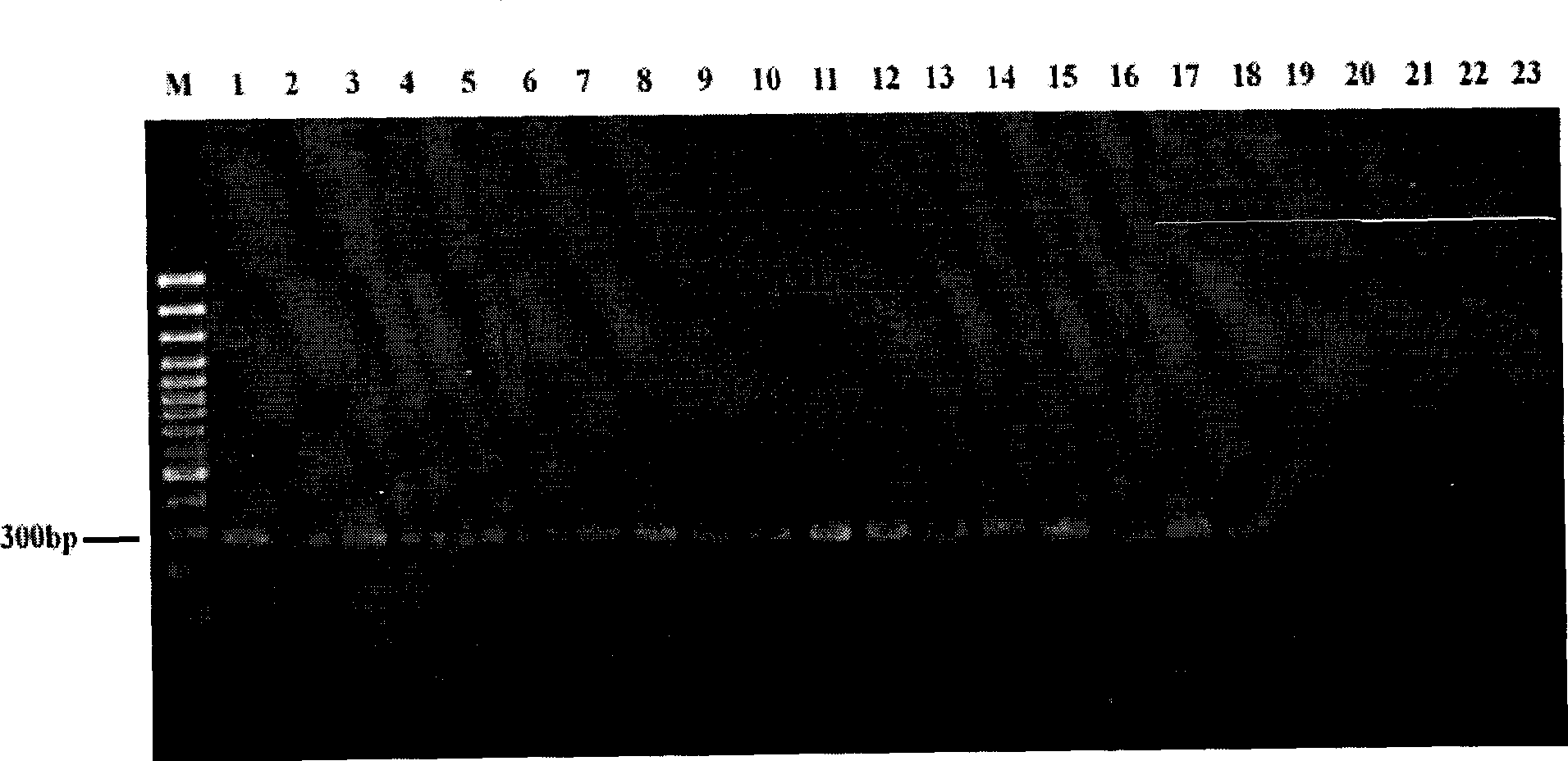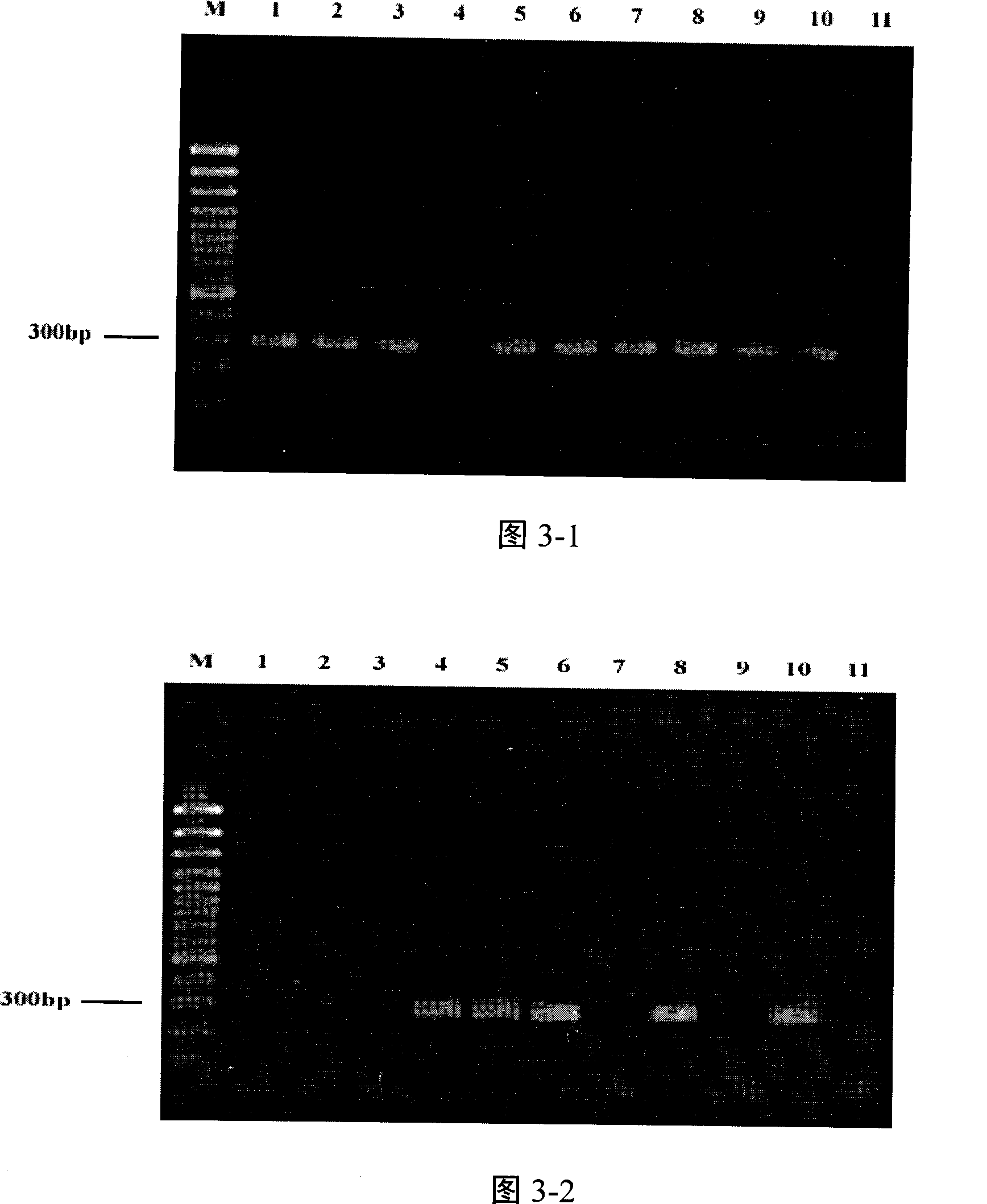Early stage rapid molecular detection method for rape sclerotinia rot
A technology for sclerotinia sclerotiorum and molecular detection of rapeseed is applied in the field of molecular detection and detection of plant diseases, which can solve the problems of large workload, time-consuming and labor-intensive, difficult to predict and forecast, and achieve the effect of high sensitivity and rapid detection.
- Summary
- Abstract
- Description
- Claims
- Application Information
AI Technical Summary
Problems solved by technology
Method used
Image
Examples
Embodiment 1
[0058] Embodiment 1: detect the specificity test of the specific primer designed by the present invention to sclerotinia and other fungal isolates
[0059] 1. Culture of fungal isolates and fungal hyphae
[0060] See Table 1 for a list of S. sclerotiorum and other fungal isolates and their collection locations. Inoculate the fungal isolate on the PDA medium (formula and its preparation method: use the conventional method, i.e. cook with 200g of peeled potatoes, 20g of glucose and a small amount of distilled water, add distilled water to 1000ml), cultivate at 20°C, and activate for 2-3 Second-rate. Then use a puncher with a diameter of 5mm to punch out the agar block containing mycelium, inoculate it on a PDA plate covered with cellophane, scrape an appropriate amount of mycelium after 48 hours, and store it at -20°C.
[0061] Table 1 The collection locations and molecular detection results of the isolates to be tested
[0062]
[0063]
[0064] The above-mentioned iso...
Embodiment 2
[0076] Embodiment 2: detect the sensitivity test of the specific primer designed by the present invention to sclerotinia
[0077] 1. Culture of Sclerotinia strain SUN-F-M mycelia
[0078] The Sclerotinia strain SUN-F-M mycelium was inoculated on the PDA medium (refer to the above "Summary of the Invention" for the formula), cultured at 20° C., and activated 2-3 times. Then use a puncher with a diameter of 5 mm to punch out agar blocks containing mycelium, inoculate them on a PDA (formulation as described above) plate covered with cellophane, scrape an appropriate amount of mycelium after 24 hours and freeze at -20°C.
[0079] 2. Extract the total DNA of Sclerotinia strain SUN-F-M
[0080] With reference to Sambrook et al. (Sambrook, J., Frisch, E.F., Maniatis, T., Molecular Cloning: A Laboratory Manual, second ed.1989.Cold Spring Harbor Laboratory, Cold Spring Harbor, NY), the specific steps are as follows: weigh 0.2g The mycelium frozen at -20°C was fully ground into powder...
Embodiment 3
[0100] Example 3: Specific steps for implementing rapid molecular detection of early onset of Sclerotinia sclerotiorum in field
[0101] 1. Gather rapeseed petals
[0102] Sterilize the 1.5ml Eppendorf tube first. The rapeseed field of Huazhong Agricultural University in Wuhan City, Hubei Province, China to be tested was divided into 4×4=16 plots, and each plot adopted a 5-point sampling method, and the total number of samples was 80. Littered petals were collected from canola leaves, and one petal was packed into an Eppendorf tube. Store in -80°C freezer.
[0103] 2. Extraction of total DNA from rapeseed petals
[0104] (1) Take out the Eppendorf tube containing the petals from the -80°C refrigerator, and quickly add 200 μl of extraction buffer (recipe is shown in the aforementioned "Summary of the Invention") to submerge the petals;
[0105] (2) Heating with a low-grade heat of a domestic microwave oven, the processing time and sequence are 20s, 20s, 15s, preferably with...
PUM
| Property | Measurement | Unit |
|---|---|---|
| Sensitivity | aaaaa | aaaaa |
Abstract
Description
Claims
Application Information
 Login to View More
Login to View More - R&D
- Intellectual Property
- Life Sciences
- Materials
- Tech Scout
- Unparalleled Data Quality
- Higher Quality Content
- 60% Fewer Hallucinations
Browse by: Latest US Patents, China's latest patents, Technical Efficacy Thesaurus, Application Domain, Technology Topic, Popular Technical Reports.
© 2025 PatSnap. All rights reserved.Legal|Privacy policy|Modern Slavery Act Transparency Statement|Sitemap|About US| Contact US: help@patsnap.com



